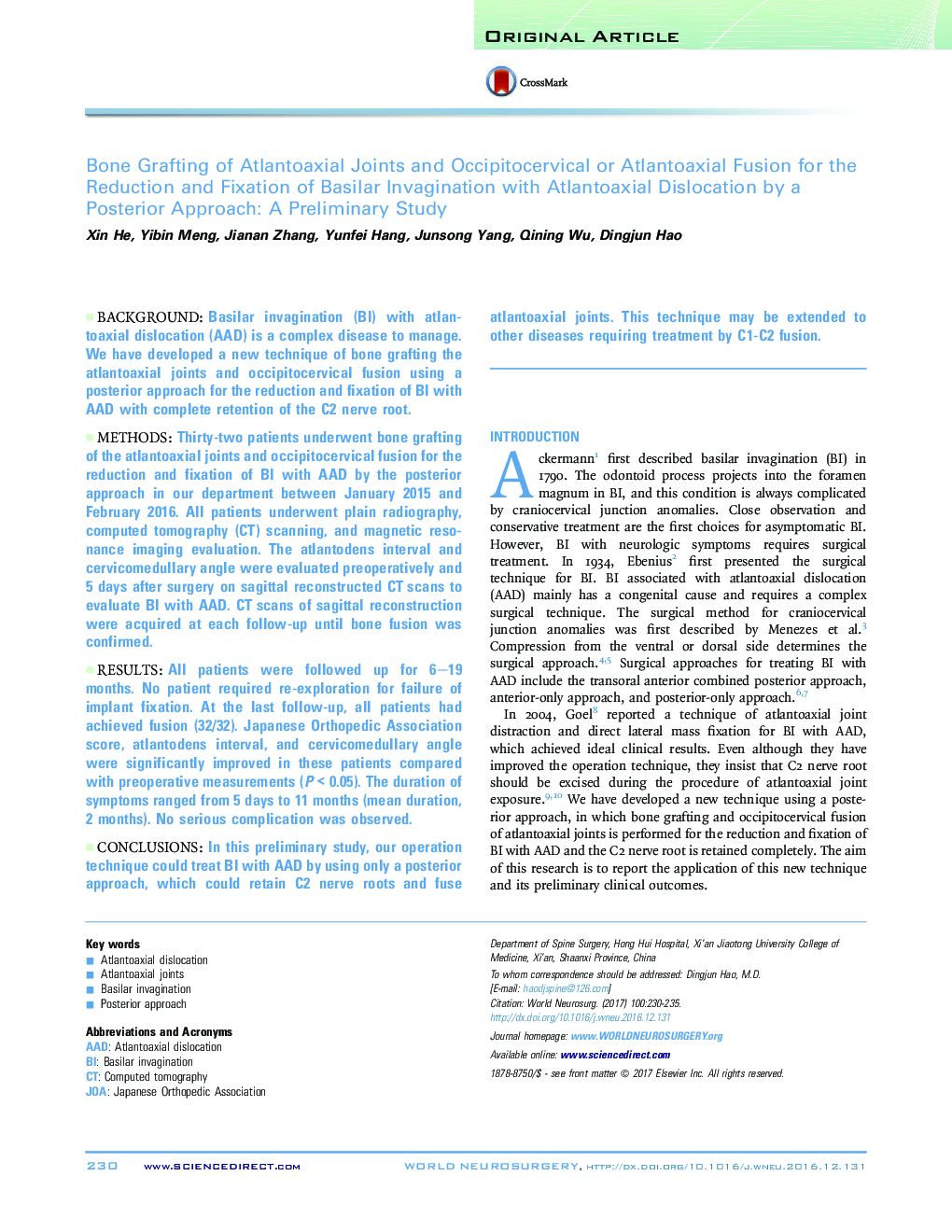| کد مقاله | کد نشریه | سال انتشار | مقاله انگلیسی | نسخه تمام متن |
|---|---|---|---|---|
| 5634501 | 1581455 | 2017 | 6 صفحه PDF | دانلود رایگان |

BackgroundBasilar invagination (BI) with atlantoaxial dislocation (AAD) is a complex disease to manage. We have developed a new technique of bone grafting the atlantoaxial joints and occipitocervical fusion using a posterior approach for the reduction and fixation of BI with AAD with complete retention of the C2 nerve root.MethodsThirty-two patients underwent bone grafting of the atlantoaxial joints and occipitocervical fusion for the reduction and fixation of BI with AAD by the posterior approach in our department between January 2015 and February 2016. All patients underwent plain radiography, computed tomography (CT) scanning, and magnetic resonance imaging evaluation. The atlantodens interval and cervicomedullary angle were evaluated preoperatively and 5 days after surgery on sagittal reconstructed CT scans to evaluate BI with AAD. CT scans of sagittal reconstruction were acquired at each follow-up until bone fusion was confirmed.ResultsAll patients were followed up for 6-19 months. No patient required re-exploration for failure of implant fixation. At the last follow-up, all patients had achieved fusion (32/32). Japanese Orthopedic Association score, atlantodens interval, and cervicomedullary angle were significantly improved in these patients compared with preoperative measurements (P < 0.05). The duration of symptoms ranged from 5 days to 11 months (mean duration, 2 months). No serious complication was observed.ConclusionsIn this preliminary study, our operation technique could treat BI with AAD by using only a posterior approach, which could retain C2 nerve roots and fuse atlantoaxial joints. This technique may be extended to other diseases requiring treatment by C1-C2 fusion.
Journal: World Neurosurgery - Volume 100, April 2017, Pages 230-235